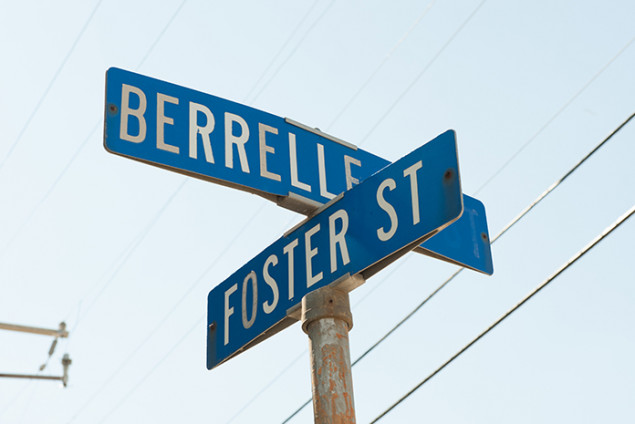Berrellesa Palms: Overcoming Obstacles to Serve Frail Seniors
Visiting Berrellesa Palms two years after the residents first moved in, it is hard to imagine there could ever have been anything controversial about the large and very attractive, Victorian-style apartment building that is home to a community of seniors. Built on a vacant industrial yard that was long considered an eyesore in downtown Martinez, California, the building blends in beautifully with the historic homes nearby. Inside, residents like Richard Reynolds, 75 and recovering from a stroke, receive the supportive services they need to live independently, in modern apartments with full accessibility features built in.
But when Resources for Community Development (RCD) first proposed building a 48-unit apartment complex designed to enable very frail low- and very low-income seniors, most with chronic illnesses and many at risk of homelessness, to age gracefully in place, there was fierce opposition from both community members and local officials.
When I was first presented with this proposal, I didn't just say 'no,' I said 'Hell no!'Rob Schroder, Mayor of Martinez, California
Overcoming Objections and Obstacles
Some local residents imagined that the development would be a “glorified homeless shelter.” Others objected to the idea that the apartments would not be restricted to current
Visiting Berrellesa Palms two years after the residents first moved in, it is hard to imagine there could ever have been anything controversial about the large and very attractive, Victorian-style apartment building that is home to a community of seniors. Built on a vacant industrial yard that was long considered an eyesore in downtown Martinez, California, the building blends in beautifully with the historic homes nearby. Inside, residents like Richard Reynolds, 75 and recovering from a stroke, receive the supportive services they need to live independently, in modern apartments with full accessibility features built in.
But when Resources for Community Development (RCD) first proposed building a 48-unit apartment complex designed to enable very frail low- and very low-income seniors, most with chronic illnesses and many at risk of homelessness, to age gracefully in place, there was fierce opposition from both community members and local officials.
When I was first presented with this proposal, I didn't just say 'no,' I said 'Hell no!'Rob Schroder, Mayor of Martinez, California
Overcoming Objections and Obstacles
Some local residents imagined that the development would be a “glorified homeless shelter.” Others objected to the idea that the apartments would not be restricted to current Martinez residents. City officials were deeply concerned that the project just didn’t fit with the City’s Downtown Specific Plan, which included sprucing up the quasi-industrial, older part of town in which it is located and bringing new economic activity to downtown Martinez businesses.
“When I was first presented with this proposal, I didn’t just say ‘no,’ I said ‘Hell, no!’” recalls Martinez Mayor Rob Schroder. By contrast, a few years earlier, the mayor, other officials, and most of the community had been in support of a different RCD plan for the same site, one that would have created housing targeted to seniors 55+ with annual incomes of up to $32,000. Those in favor of that proposal were enthusiastic about the idea of a slightly younger and more affluent population potentially bringing $800,000 in new spending to downtown businesses.
Unfortunately, other local residents objected to the size of the proposed moderate-income project and filed a lawsuit that triggered a lengthy environmental review process.
While the suit was ultimately unsuccessful, the project stalled for several years. At the same time, the national economy worsened, California redevelopment agencies were shut down, and other sources of funds that had been committed to the original project dried up. Faced with a new financial reality but already in possession of the property, purchased with $1.4 million in housing funds from the County of Contra Costa, RCD needed to find a way to make the project viable again.
The mayor, city council members, and Martinez residents all participated in defining what Berrellesa Palms would be.Dan Sawislak, Executive Director, Resources for Community Development
Rethinking the Concept
RCD’s mission is to create a better future for those with the fewest options. One way to make the Martinez project financially viable again was to change the occupancy requirements to serve seniors who were older (62+), poorer, and significantly frailer than those who would have qualified for the original project.
RCD’s revised plan for the property would integrate housing with vital supportive services for seniors with chronic medical conditions, many of whom might be on the brink of homelessness. Winning a $6 million grant from the California Department of Housing and Community Development was the start of putting together a new public-private financing package, which included a $490,000 AHP grant through Bank member Bank of the West. “We rely on many funders for our developments, and AHP is an important piece of the puzzle,” says Dan Sawislak, RCD’s executive director. “And Bank of the West has been great to work with to tap into the AHP program.”
But the change in the project’s target population reignited opposition among local community members and city officials, even Mayor Schroder. His primary concern was that the re-defined project would not generate the kind of economic activity the City’s development blueprint envisioned.
Still, the mayor was willing to listen to RCD’s new plan. RCD made several presentations to officials and to the public and presented updated data indicating that the project could still generate significant economic benefits for the downtown area, now estimated at $600,000 instead of $800,000. “In our experience, people may express concerns before they see the details,” says Sawislak. “The mayor, city council members, and Martinez residents all participated in the process of defining what Berrellesa Palms would be.”
What ultimately persuaded the mayor was touring other RCD properties with RCD staff. “They educated me, and they convinced me that, number one, they build quality housing,” Mayor Schroder says. “But most important to me was seeing that they manage and maintain their properties properly.” The RCD communities the mayor visited were all modern, clean, and enriched by services that facilitated independent living for their senior residents. Schroder became an advocate for the re-defined project.
Our residents here are so happy they aren’t in a skilled nursing facility. For this moment in time they have a place of their own.Ebony Smith, Resources for Community Development
Supporting Seniors and Creating Community
An innovative program of supportive services is available to all residents of Berrellesa Palms, currently supplied by Rehabilitation Services of Northern California. Case managers like Sonja Mack are onsite four days a week to assist the higher needs residents in getting their health needs met, tailoring services and resources to meet individual requirements. “Residents need help with basic things that we take for granted, like making a phone call about a bill,” Sonja says. “And sometimes they just need someone to talk with them, not at them. That’s my role.”
Ebony Smith is an associate director of resident services with RCD, helping to make sure things run smoothly for the senior residents of multiple RCD properties. In addition to individual case management, Berrellesa Palms organizes health education workshops and social activities. A delivery from the local food bank arrives twice a month, and resident volunteers manage the distribution of grocery bags. “Our residents here are so happy they aren’t in a skilled nursing facility, or staying with family they may not be comfortable with,” Ebony says. “For this moment in time they have a place of their own.”
Resident Richard Reynolds came to Berrellesa Palms through the State of California’s Assisted Living Waiver Program, which helps transition people from nursing homes back into appropriate housing. The program, which is based on Medi-Cal eligibility, also entitles him to other services that make living independently with his particular health issues possible. He takes advantage of the services and resources Berrellesa Palms has to offer. “Everything is on an even keel now,” Mr. Reynolds says. “This place is cool.” In his spacious, comfortable apartment, Mr. Reynolds is able to babysit his niece and nephew during the summer holidays, and, now that he is feeling better, he is considering taking computer classes so he can help other residents get online.
According to Mayor Schroder, what was once so controversial is now well accepted as an asset to the community and as something that will become a catalyst for further improvements in the area. “The building,” he says, “is beautiful, just unbelievably nice.” It fits in well with the surrounding homes, and the residents are fitting in as well. “I see them around town, which is great, and I know an individual who lives there and loves it.”

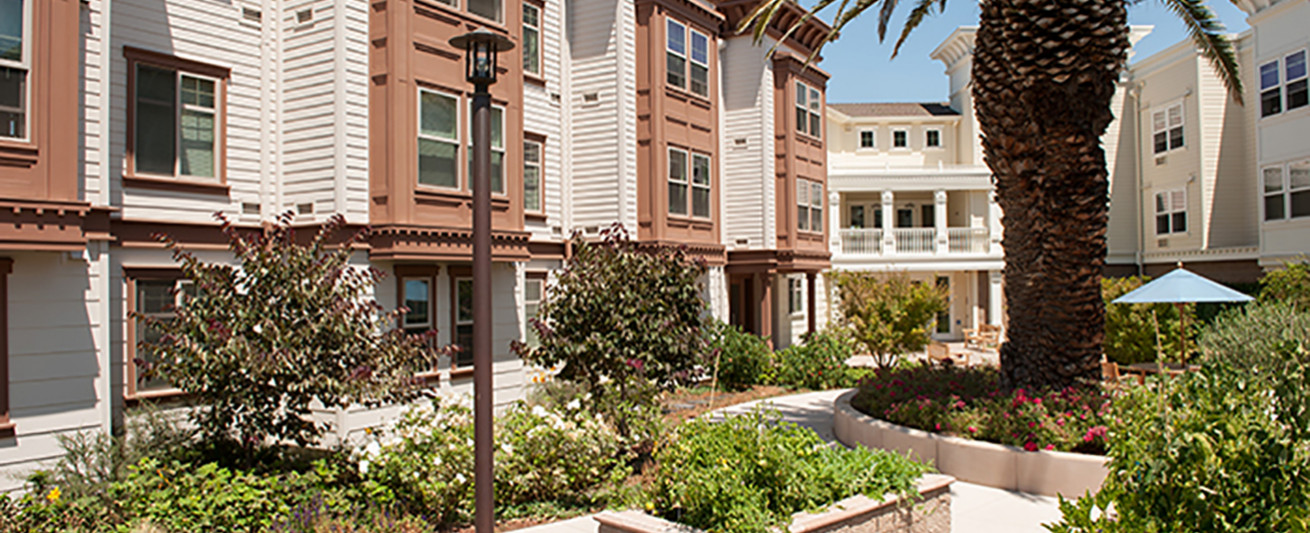
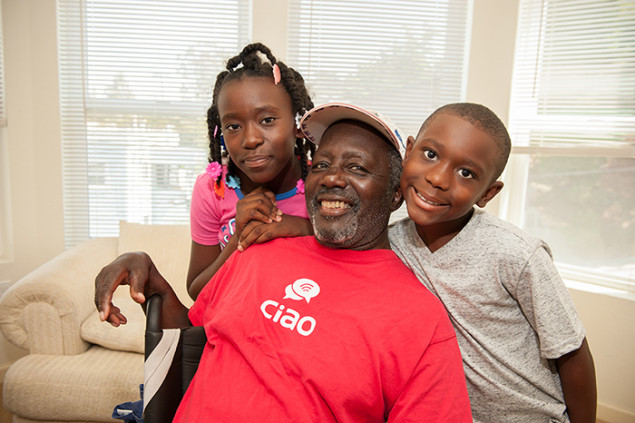 Resident Richard Reynolds with visting niece Miylekah Olujimi, 10 years old, and nephew Miylek Oluji
Resident Richard Reynolds with visting niece Miylekah Olujimi, 10 years old, and nephew Miylek Oluji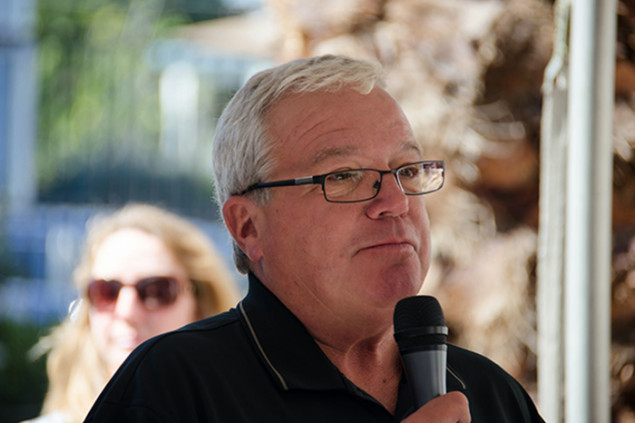 Martinez Mayor Rob Schroder speaks at the grand opening celebration.
Martinez Mayor Rob Schroder speaks at the grand opening celebration.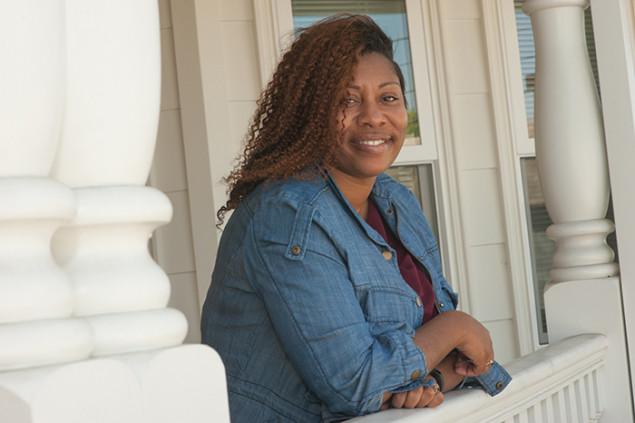 Ebony Smith, Associate Director of Resident Services, RCD
Ebony Smith, Associate Director of Resident Services, RCD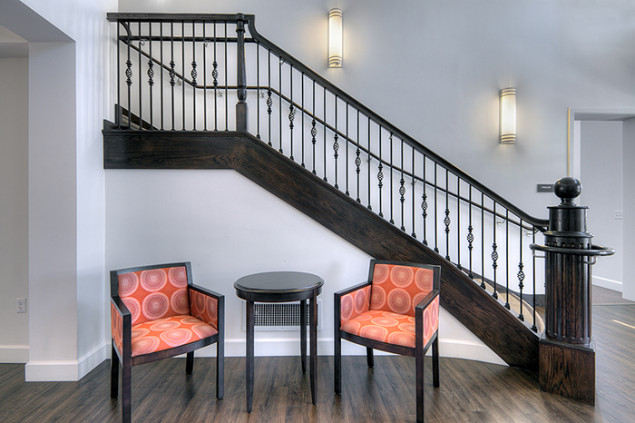 The architects took inspiration from the historic homes nearby.
The architects took inspiration from the historic homes nearby.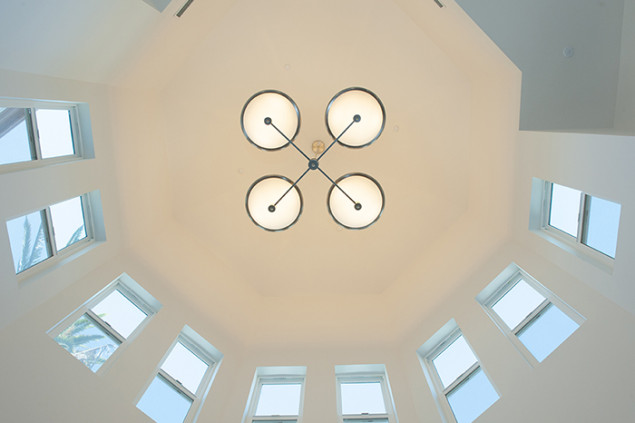 Light fills the front parlor.
Light fills the front parlor.
